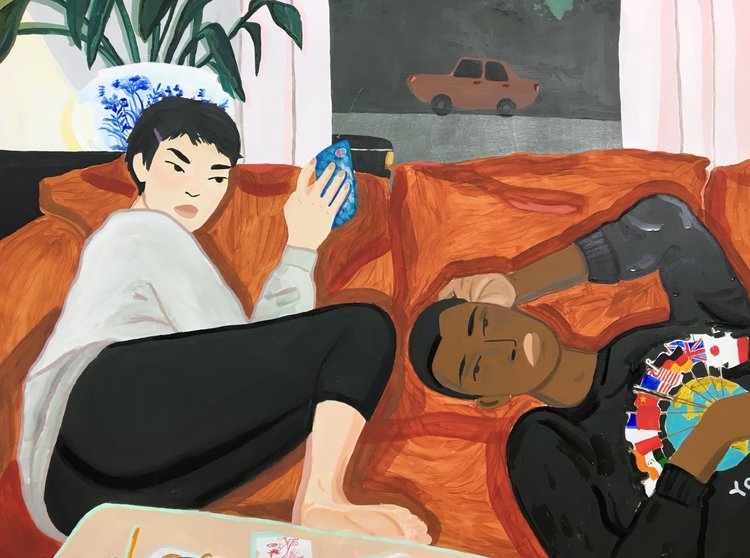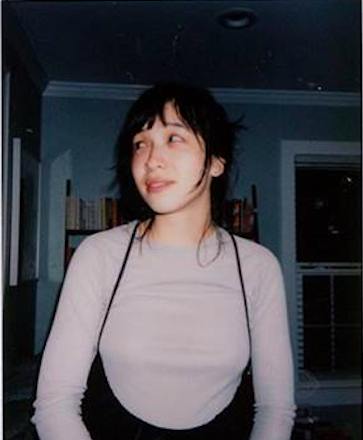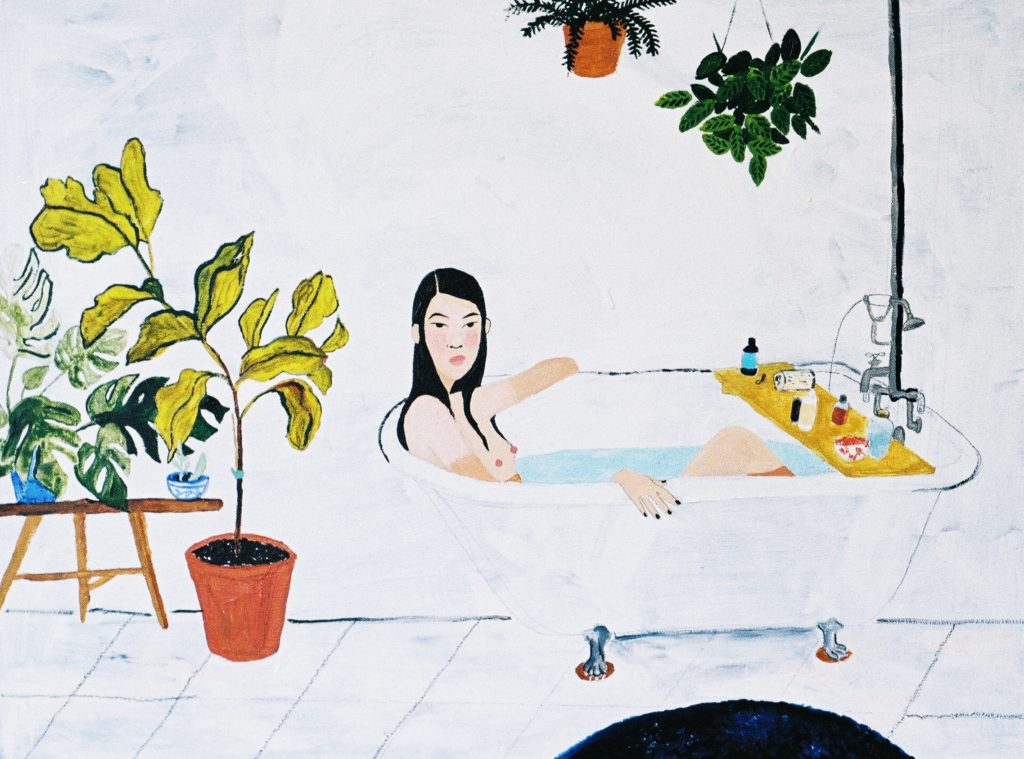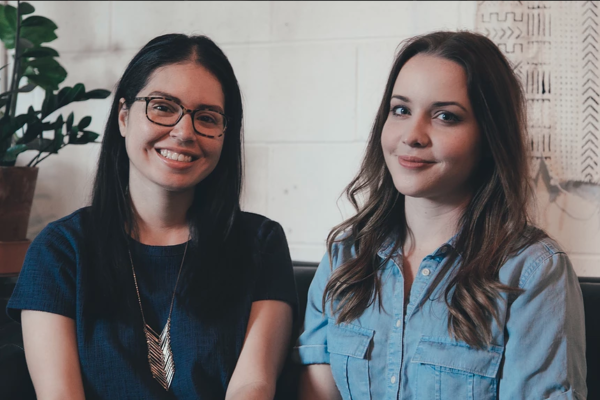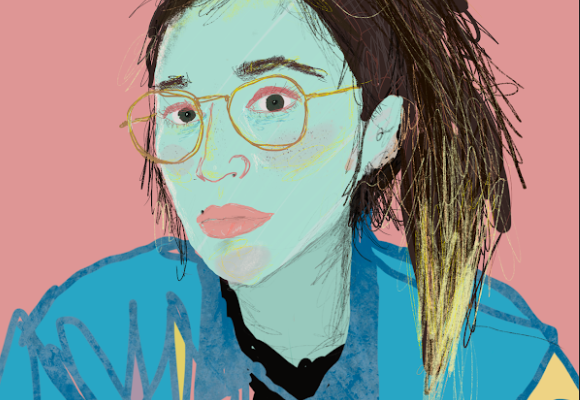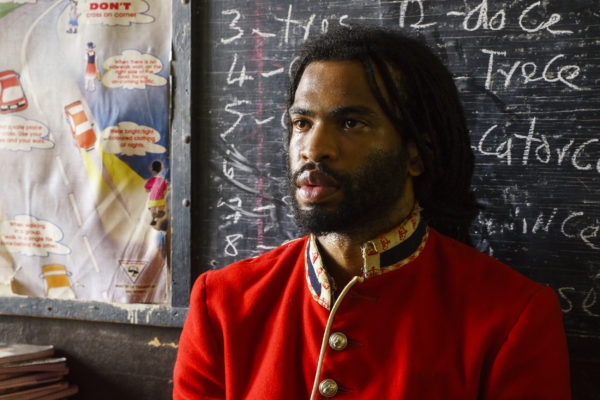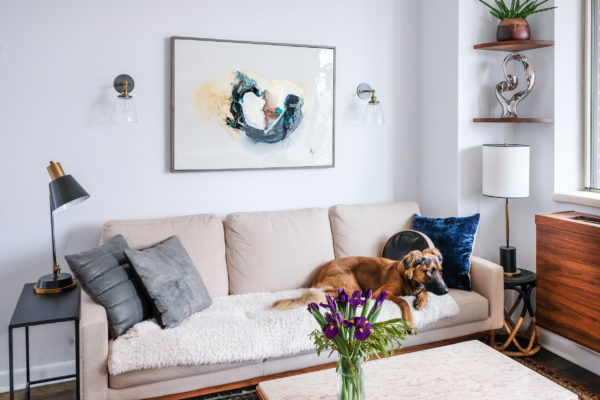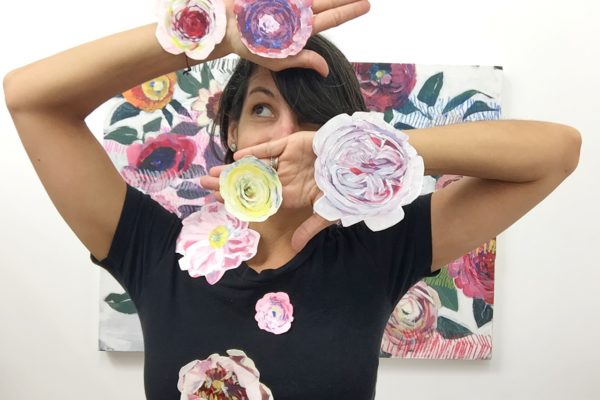Dianna Settles made her way to Atlanta by way of the Blue Ridge Mountains in North Georgia. Despite growing 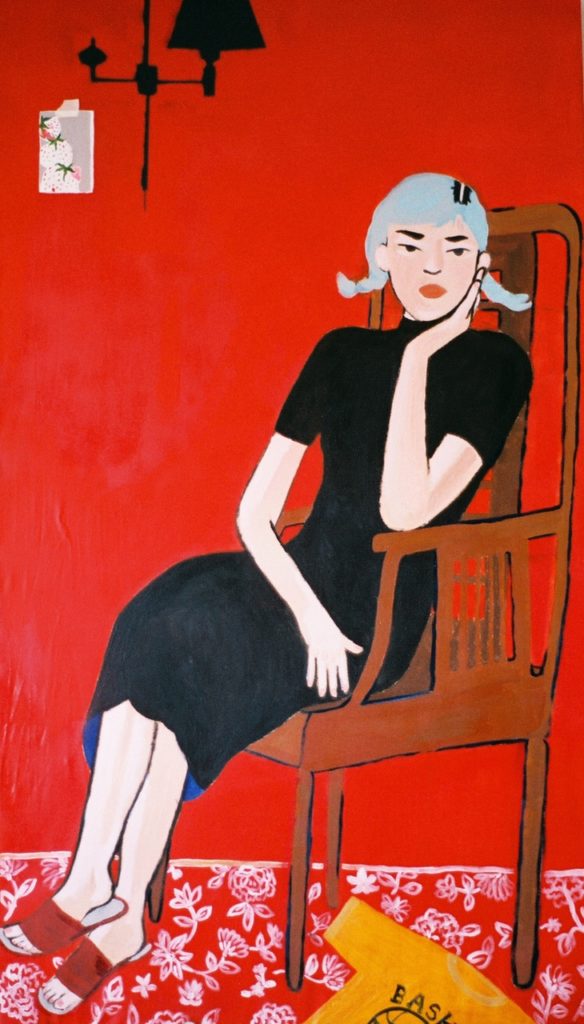 up with scarce resources, Settles always found a way to be creative — from using fruits to dye clothing to attempting to create clay out of mud. Then, a trip to Vietnam to visit her father’s homeland became an artistic turning point for her. Having done mostly photo-realistic paintings, she was exposed for the first time to her heritage and, in her words, “artwork filled with people who looked like me.”
up with scarce resources, Settles always found a way to be creative — from using fruits to dye clothing to attempting to create clay out of mud. Then, a trip to Vietnam to visit her father’s homeland became an artistic turning point for her. Having done mostly photo-realistic paintings, she was exposed for the first time to her heritage and, in her words, “artwork filled with people who looked like me.”
In addition to her paintings of women of color interacting in every day, simple settings — think living rooms, their bedrooms, and with girlfriends — Settles also leads the printmaking studio and gallery Hi-Lo Press in Midtown. She has shown her work at WISH Gallery, Zuckerman Museum of Art, Mammal Gallery, ADAC, and more.
Despite staying busy as a creative, Settles still feels unnatural using social media to promote those projects she works so hard on. “We’re the first generation to use these platforms, and so sometimes I think it’s strange to interact with the world in these ways,” she says.
Here, the Vietnamese-American artist shares more about how that trip to Southeast Asia changed her path as an artist, helping nurture Atlanta’s art community as an artist and gallery owner, and what’s next for her.
CommonCreativ: Have you always been in Atlanta? What makes you stay?
Dianna Settles: I moved around a lot as a kid before winding up in Blue Ridge, Georgia with my family when I was 11 to be closer to my grandparents. As a teenager, I was coming down to Atlanta almost every weekend to go to shows. After high school, I moved to here and went to Georgia State for their Women’s, Gender, and Sexuality Studies and Printmaking programs for a couple of years. I transferred to San Francisco Art Institute to study Printmaking and moved back to Atlanta with my partner after graduating in 2014 to be closer to our families.
Moving here changed my life and opened up my ways of thinking about what’s possible. There are so many resourceful folks who have made things happen here with their energy, labor, and magnetism. I’m ceaselessly grateful to have been involved with Sopo Bicycle Co-op, Food Not Bombs, and the Atlanta Sedition Orchestra when I first came here. I stay because I love this city and want to contribute to the energy that I feel is being steadily choked and encroached upon by gentrification and greed.
CC: Tell me about your work with Hi-Lo Press.
DS: The week after I came back from San Francisco I started an internship with Atlanta Printmakers’ Studio in order to have access to printing presses. My focus at SFAI was traditional stone lithography and that’s not a medium that’s super accessible. I was able to sneak into GSU with some friends a few times, but as a process that requires a lot of tedium that wasn’t ideal. I found a small Park’s press from 1843 in Jersey City back in early winter 2015 and drove it home with it in our van. I was happily printing in my basement but found a deal on a Vandercook SP25 that was too good to pass up. That meant that we’d have to find a space for our 1,800-pound letterpress.
I never really anticipated anything beyond studio space, but I went to the last opening that Beep Beep Gallery [before it became Hi-Lo Press] had and found out nothing had been lined up for after they left. When it became clear that we’d be able to rent it, I thought it was important to maintain the address as a meeting point for people to access art and so I began contacting friends and artists I admire to show work there. We got a couple more housemates to offset the cost of the space and had our first opening in late February of 2016. In terms of print stuff, we do a lot of business cards and stationery, wedding jobs, etc. and sometimes teach workshops on letterpress, mokulito, lithography, and relief printing.
CC: As a hub for emerging and established artists to show their work, how do you hope Hi-Lo Press is seen by the art community?
DS: I think the vibe of the space is very multi-purpose; art on one side, presses and inks on the other. I want Hi-Lo to feel accessible and welcoming. We’ve done a show for the last two years called Let’s Be Friends where 20-plus local artists will come and make work on the presses, and it’s the one I look most forward to. It feels really good having others’ energies in the studio, sharing skills and exploring new mediums together. We’ve also had free printing at a couple openings where people could make their own poster to take home on the letterpress, so it’s cool to find moments where both halves of the space are working together. Also, I love hearing conversations between the people who attend the openings and the folks sharing their work!
CC: How did you find your style?
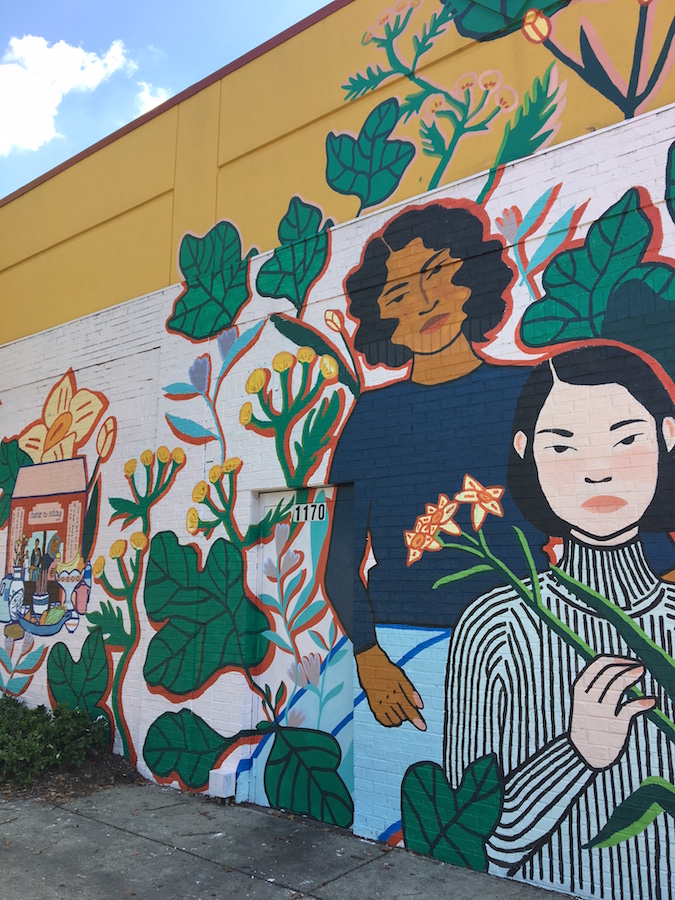 DS: I’ve been making art for as long as I can remember. I grew up pretty poor, but my mom was always supportive of mine and my sister’s pursuits and would bring home stacks of paper for me to draw on the backs of and magazines from doctor’s offices to use as references for my drawings. I was always interested in the ways different colors work together and spent a lot of time outside. I would try to make my own clay out of mud and dye clothes with pokeberries and things like that.
DS: I’ve been making art for as long as I can remember. I grew up pretty poor, but my mom was always supportive of mine and my sister’s pursuits and would bring home stacks of paper for me to draw on the backs of and magazines from doctor’s offices to use as references for my drawings. I was always interested in the ways different colors work together and spent a lot of time outside. I would try to make my own clay out of mud and dye clothes with pokeberries and things like that.
All that being said, my style has changed dramatically. Growing up, I thought that drawing things photo realistically was my goal but became bored with that pretty early. What really changed my aesthetic and brought me to the style I work in today was visiting Vietnam (where my father is from) for the first time a few years ago. Visiting the museums and galleries there I was overwhelmed being surrounded by artwork filled with people who looked like me. I was aware of it theoretically, but couldn’t articulate before experiencing the opposite. Up to that point the paintings and photos I saw featuring Asian people, especially women, were of figures in passive or fetishized roles, almost always made by white artists. I hadn’t realized my own internalization of white supremacy and how I wasn’t even rendering people who looked like me.
Additionally, as a mixed-race Gemini, I identify with the in-betweens. Some of my favorite works that I saw in Vietnam were paintings interpreting Western artists’ styles and their juxtaposition with more traditional Vietnamese art. I find a lot of inspiration in the collapsing of those realms. I was there for almost a month for my honeymoon and was constantly sketching out ideas for things to paint when I got home and writing down color palettes. I think I made 20 paintings the month I came home.
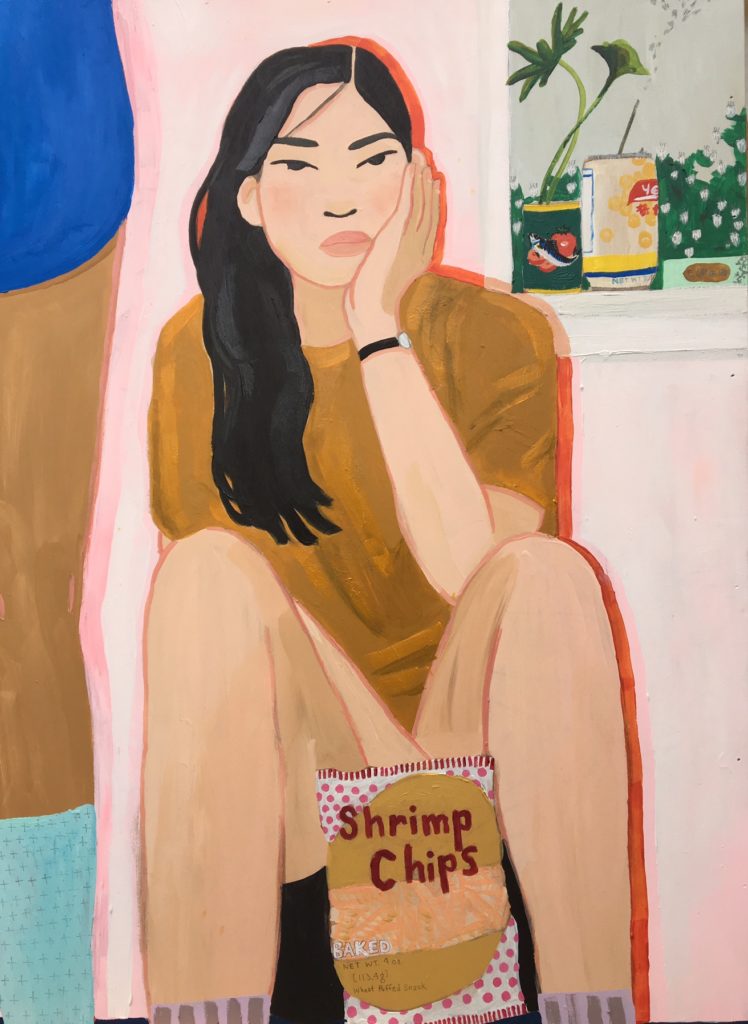 CC: Many of your pieces feature women, living their lives or hanging out with girlfriends. What attracts you to those settings, to those subjects?
CC: Many of your pieces feature women, living their lives or hanging out with girlfriends. What attracts you to those settings, to those subjects?
DS: Representation is important. I focus on women of color in my paintings because I don’t think there is enough focus on women of color and want to muddy up the milk of the dominant ideologies however I can. The glimpses I depict are commonplace because I don’t feel a need to show anything particularly heroic or out there in order to give space to tenderness and strength and self-care. For non-white bodies, just existing is a radical act.
I make art as a way of processing things that I fall short of communicating verbally. I make art to share my experience with others and to become better acquainted with my own feelings and needs.
CC: What inspires you?
DS: My friends and chosen family inspire me! I feel certain I’d self-destruct without them and the things we do together along with what they tell me about sometimes make their way in the art I make. This time of year I’m especially inspired by everything blooming — I love flowers and use them in my artwork as a way to communicate secret messages. Colorful packaging from the groceries I get from the First Oriental Market or Hoa Binh inspire me; I used to save the wrappers from the Sailor Moon popsicles I’d get from the ice-cream truck as a little kid because I loved them so much.
I also bike and walk to the studio most days, and it feels good to be able to notice my surroundings in a more intentional way with how slowly I move — I stop a lot to take pictures.
CC: Do you have any dream collaborations with other local artists?
DS: So many! I’ve just started some collaborative drawings with my friend Anna Jacobson. She’s a really wonderful illustrator and musician. I play music and started collaborating with some friends on a new project called Shiso, and we have been writing together a lot lately. I really want to do something with Yoon Nam, she’s fantastic. I feel like I have so many folks I’m interested in making all kinds of art with; painting, printmaking, music, poetry, video stuff. I just need more time.
CC: As a gallery owner and artist, what do you think about Atlanta’s art scene?
DS: There’s a great energy in Atlanta’s creative communities right now. So many good-hearted, talented folks here making art and music — it’s sometimes difficult to make it out to see everything that I want to. I love how many people are using anywhere available to them to share creative work and moments with others. Good Enough gallery, a gallery inside a home, was really great about making creative use of their space.
There seems to have been a shift in making shows more representative and inclusive recently that I’d like to see continue to rise. More folks are organizing shows that feature POC, women, and queer artists and are claiming more space like La Choloteca, OYE, and the recent Ni Aqui Ni Alla show. It feels good seeing focus and energy given to engaging with art, music and ideas made by voices that have been historically silenced and ignored. I feel like people here are excited about these things and burn the midnight oil making it out to support artists and artistic pursuits.
CC: What’s next for you?
DS: Currently at Hi-Lo Press, Estela Semeco has a show up of her portraits of the Atlanta Latinx community through the middle of May. I have a piece in the Her Ritual show at WISH Gallery. I have a piece I contributed to fLoromancy that’ll be out at the end of the month that I’m very excited about. Erin Palovick encouraged me to work outside of my comfort zone and I feel very grateful for having been given that nudge. I’m also working on new works for a solo show at Versa Gallery in Chattanooga in June and a handful of group shows. I tend to stay busy!
You can see more of Dianna’s work on her portfolio site and Instagram.

